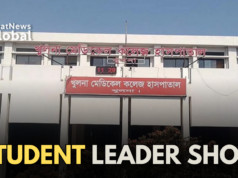External Affairs Minister S Jaishankar met with his Chinese Counterpart Wang Yi on the sidelines of the G20 summit in Rio De Janeiro on Tuesday.
Kalpit A Mankikar, China Fellow at the Observer Research Foundation believes that while significant, it is but a just another step in a long road ahead. In this edition of The Gist, he examines the issues involved and says that India cannot afford to lower its guard right now, despite all the overtures from Beijing.
The growing pushback in the South China Sea, particularly from the Philippines, and the advent of Donald Trump, whose anti-China stand seems quite clear, as well as the election of pro-independence president in Taiwan might have led President Xi Jinping to try and lower the tensions with India while he deals with those issues first, he said.
The onus of rebuilding trust, a word mentioned several times in both the readouts issued by the Chinese and Indian foreign ministries after the meeting, is totally on China, he says. It was Chinese coercion, and its attempt at occupying Indian territory which led to the clashes and standoffs at Doklam in 2017 and Galwan in May 2020, and it was thus on China to rebuild trust and goodwill.
According to Mankikar, India’s pushback, which includes not just ramping up its border security with both soldiers and infrastructure, but also denying visas and investment access to the Chinese have been steps that ensured the message went out to China that New Delhi was not going to be pushover.
Poking China on Tibet by allowing a US delegation to meet the Dalai Lama, and selling Brahmos missiles to the Philippines further reinforced the message that India was also willing to intrude on Chinese red lines if needed, he said. And New Delhi’s adamant insistence that normalcy could not be resumed until there was peace along the borders also played a part.
China’s economic slide too must have been factor in Xi’s decision to lower the temperature with India.
How will a Trump White House impact the Sino-Indian relationship? Why is India allowing Chinese companies like BYD continue to invest in India? And where does one go from here? And has India finally learnt how to leverage its growing economic and military might?
To know the answer to those questions and more, watch the full interview.
In a career spanning three decades and counting, Ramananda (Ram to his friends) has been the foreign editor of The Telegraph, Outlook Magazine and the New Indian Express. He helped set up rediff.com’s editorial operations in San Jose and New York, helmed sify.com, and was the founder editor of India.com.
His work has featured in national and international publications like the Al Jazeera Centre for Studies, Global Times and Ashahi Shimbun. But his one constant over all these years, he says, has been the attempt to understand rising India’s place in the world.
He can rustle up a mean salad, his oil-less pepper chicken is to die for, and all it takes is some beer and rhythm and blues to rock his soul.
Talk to him about foreign and strategic affairs, media, South Asia, China, and of course India.




